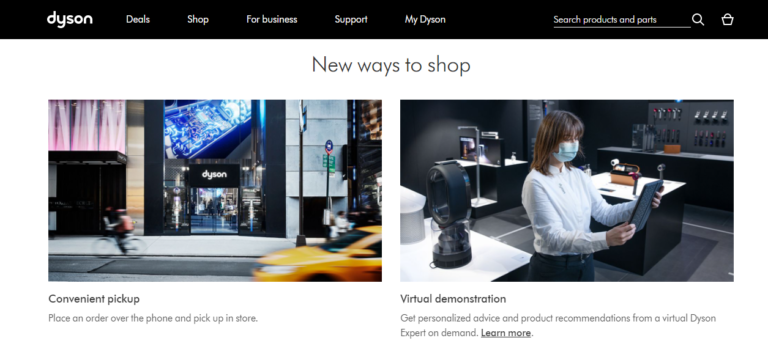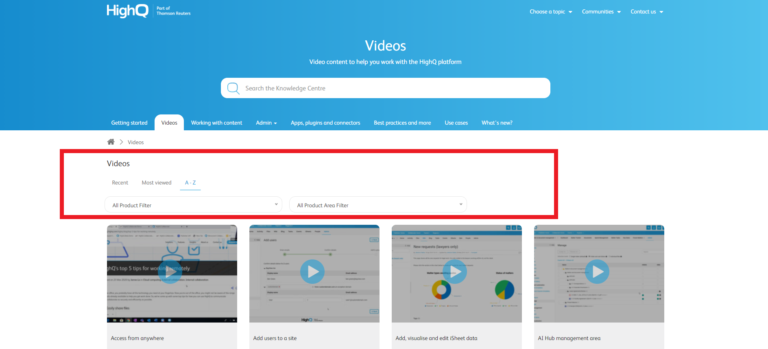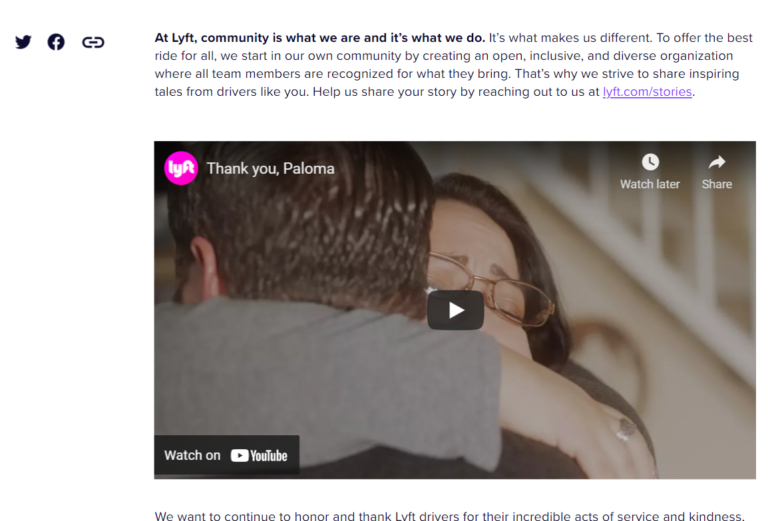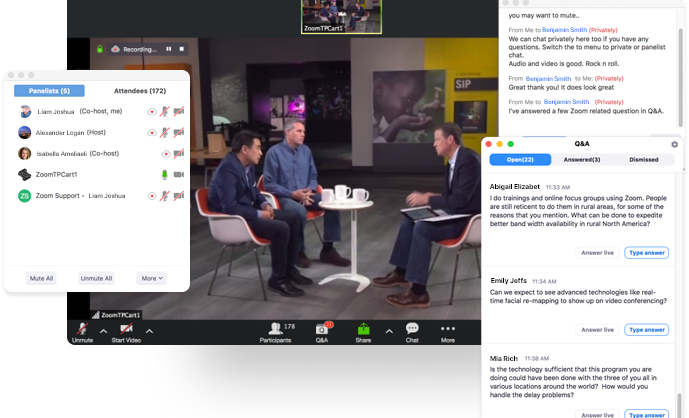Using video as a sales and marketing tool has been a winning strategy for a while now. But with COVID-19 upending the way we do business, marcom and sales aren’t the only departments jumping on the bandwagon. The use of video is also gaining momentum as a powerful tool for customer support.
According to the Harvard Business Review, support departments need new ways to deliver a superior customer experience, especially in today’s challenging environment.
Enter video.
Nineteen percent of businesses already use video in their customer support messages, and many more are poised to take the plunge over the next few years.
From video-driven knowledge bases, to customer onboarding sequences and live support chats, video is revolutionizing the customer support landscape.
Video is a flexible, multi-purpose tool that fits well into just about any customer support strategy. And adding it into your own strategy is easier than you might think. Below are five real-life examples of major brands using video to improve the support experience — both for their customers and for their support teams.
Create videos that drive action
Activate your audience with impactful, on-brand videos. Create them simply and collaboratively with Biteable.
1. Use pre-made videos to answer repetitive questions
Consider this scenario.
Thanks to your solid CRM software, you just got your hands on the most recent customer data and trends — how users interact with your brand, what kinds of challenges they face, what they like and dislike about your product.
While analyzing the information, you notice a repetitive query. It’s a simple question related to how your product works, and it can be answered with a pretty simple conversation. But this query crops up so frequently in customer interactions that you begin to wonder what’s going on.
You have two options.
One: let your CX agents repeat the answer to the same question over and over again, wasting their valuable time. Or two: create a short, effective video demonstrating the solution, then include that video in your “Knowledge Base” or “Help” section.
How Asana approaches customer support videos
We’d go for the latter, creating solution-focused support videos. Take Asana as an example. The brand has a dedicated Video Tutorials section on their website.

On clicking this section, the user is directed to a page with bite-sized tutorial videos.

Research corroborates Asana’s strategy. Seventy two percent of customers would rather learn about a product or service by way of video.
Adding premade videos to your customer support offerings saves time and hassle for your agents. But more importantly, it enhances the customer experience, giving people an easy, user-friendly way to learn about your products.
How to incorporate pre-made videos into your CX strategy
As a starting point, comb through your chatbot, in-house, CRM software, or any other tool you use for gathering user data. Look for trends and identify the top-five customer pain points.
Use this invaluable information to create short explainer videos and “How-to” content (one of the top four categories on YouTube, by the way).
Not sure where to start? An explainer video template will help you fill your customer support feed in no time.
2. Resolve support issues with video chat
As part of their reporting on customer support departments during the COVID-19, the Harvard Business Review conducted an AI analysis of more than one million customer service calls. The results were astounding but not surprising:
During the early days of the pandemic, support teams saw a dramatic increase in customer’s emotional levels, with anxiety and frustration at an all-time high.
- Customer reps struggled to effectively respond to “difficult” calls related to the pandemic. From last-minute travel cancellations to appeals for bill payment extensions, the list was never-ending.
It’s clear that CX reps need new ways to connect with and support customers through difficult calls. Video chat software solves this problem in two ways. It provides instant, effective, results-oriented support while also allowing reps to tap into each other’s knowledge and experience.
Dyson’s take on video support chats
British technology company Dyson understands the complexity of its products and the natural curiosity users have about them.
The company offers live virtual sessions with Dyson experts. During these personalized, one-on-one video chats, users get valuable demos and product recommendations.
Ingenious, right?

A video-driven chat experience is the next best thing to an in-person query resolution. When executed well, video chat support can mimic physical interactions and boosts the query resolution time.
Plus, customers can ask questions in real-time and get in touch with agents on the go at their own convenience, making video chat a win-win for all.
Adding video chat to your customer support offerings
If your support team aims to accelerate your query resolution times, video chat might be the ideal solution. This is also a good option if your company has complex products that are more easily demonstrated visually.
Likewise, consider this solution if you do not have physical locations to provide in-person support, or if you find many of your customers either can’t get to your physical locations or just prefer a virtual support option.
Instead of letting customers wait for a response to an email or letting them hold on the phone, opt for a multi-purpose video chat tool that effectively addresses the customer’s pain points at the click of a button.
3. Build a video-driven knowledge base
In today’s fast-paced environment, customers don’t have the time to wait on hold for an agent. So why not make your customers the self-serving agents for the brand?
One of the most effective ways to empower your customer base to become self-sufficient is by building an in-depth, well-researched, and constantly up-to-date knowledge base. Give customers the power to become product experts — on their own time and in a user-friendly video format.
Your video-driven knowledge base can also serve double duty as an internal resource for your support agents. Develop a library of training videos to bring new agents up to speed, and easily update the library so your entire team stays current and knowledgeable.
HighQ and Lyft empower customers with video knowledge bases
HighQ, a legal business management platform developed by Thomson Reuters, understands the benefit of a video knowledge base. The company developed a dedicated ‘Video Content’ section to help users get acquainted with the platform.

Users can search for relevant videos and filter the results by product area. This makes the search process seamless and quick.
Other ways video can be combined into your knowledge base include:
Troubleshooting: Create instructive, easy-to-digest videos that troubleshoot user queries efficiently.
- Customer onboarding: Create short onboarding videos that walk new users through account up, payment options, platform models, and more.
To take your knowledge base to the next level, include a variety of content formats within the section. Ridesharing company Lyft does this effectively. They feature engaging blogs and videos that highlight the stories of Lyft drivers. This gives their knowledge base a human touch and also demonstrates a sense of belongingness and community amongst users.
The company even included a series of community-driven inspirational stories. These tales are based on the theme of inclusivity and diversity and how it positively impacts the Lyft community at large.

Building your own video knowledge base
Creating a video-driven knowledge base lets customers feel in control and paves the way for a self-service culture. More importantly, it promotes your company’s core values so people can connect with your brand on a deeper, emotional level.
Your knowledge base doesn’t need to be dull, boring, or static. The idea is to create a constantly updated page that sheds light on customer issues by way of FAQs, video tutorials, and more. As a thumb rule, include various forms of content formats — from FAQs and blogs to video infographics and tutorials — to make the knowledge base page more inviting and interesting to read.
4. Invest in customer (and employee) onboarding videos
Another key area most companies, particularly in the SaaS space, struggle with is user onboarding.
If you have a well-conceived flow of onboarding videos in place, your support team’s workload is bound to decrease. New customers simply view the videos and get their questions answered instead of reaching out to the customer support team for basic, routine queries.
Consider this same onboarding philosophy for new customer service reps as well. A series of employee onboarding videos gives reps valuable information about the brand, the product, and the company’s customer support philosophy.
This type of on-demand onboarding caters well to scattered teams. And, much like your customer onboarding videos, service reps can easily refer back to them whenever they need a refresh.
Zenefit’s onboarding videos let customers lead the way
To create a killer onboarding video for customer support, think about the primary purpose of your video. Is it to educate new customers, or do you wish to boost sales by showing a demo of your offering?
If you aren’t sure where to begin, consider the example of Zenefit. They created a Demo Center featuring short, high-quality onboarding videos about each individual product feature and function.
This enables customers to find the exact answers they need and literally guide their own onboarding process.

Creating your own onboarding videos
When it comes to onboarding videos, the idea is to ‘show, don’t tell.’ Creating instructional onboarding videos takes the burden off your support team, giving them more time to take care of important tasks like proactive problem-solving or catering to disgruntled existing users.
In your onboarding videos, include product walk-throughs that answer some of the most common questions users may have. Show users how to set up their accounts, change their payment options, and upgrade for advanced features.
If your product is complex, break your onboarding up into a series of smaller, bite-sized videos. Use this same bite-sized format for your employee onboarding videos as well. Organize the videos so people can easily find exactly what they need, when they need it.
5. Offer proactive support via webinars
Tying back to the first point, once you have a ready list of the most common customer questions, you can build a full-blown webinar on these key support topics. This not only drives user engagement but also enables your brand to provide proactive customer support. Viewers visiting the webinar may have a variety of their questions addressed if the topic is a pain-point for them.
How Zoom conducted a valuable webinar
When the pandemic forced everyone home, video conferencing company Zoom saw a huge spike in new users, many of whom had never used any video conferencing product before.
To bring new users up to speed, the company conducted a webinar tackling the most common issues that were circling their userbase’s mind.

Taking the plunge into webinars
Instructive and interactive webinars can educate and engage users and lead to a delightful user experience. In turn, this often boosts brand loyalty as customers get their queries addressed and leave more satisfied and happy with the brand’s service.
That said, it’s critical that brands drive webinars on the right topics.
Focus your webinars on the most emergent user issues. Dive into your data for the most pressing support topics. Or, consider surveying existing customers to find out what they most want to learn.
Optimize your customer support with video analytics
Once you’ve made your first batch of customer support videos, don’t stop there. Video analytics are an equally important piece of the puzzle.
You can follow all the best practices for creating quality videos, but if you don’t analyze the performance of those videos using the right metrics, you’ll never understand if you’re headed in the right direction.
Video analytics shed light on key metrics, including how many people are watching, whether they’re sticking around to the end, and how long they’re spending on the video page.
Say you have a video section within your knowledge base that consistently receives a good number of views. This must be a topic your customers care about. Use these insights to optimize your CX team’s performance and gather actionable info on how to best train your agents.
Further promote high-performing videos on social media and other platforms to boost your SEO efforts. (Search engines are known to prioritize pages with high-quality content, including videos.)
Embed your best videos in emails geared toward prospects or existing customers. You can even integrate video into your CRM software and directly reach out to users to address their issues in real-time.
Customer support is a field that will never go away. No matter what, your customers will have questions at different stages of their journey. Leverage the power of video to support users at each stage of their customer journey, and make your CX efforts a treat for sore eyes.
Become a CX video all-star with Biteable
Creating your first customer support video doesn’t have to take a lot of your valuable time. Do it in minutes with Biteable, the world’s simplest video maker.
Start with a fully customizable template or make your video from scratch. Choose from over 1.8 million images, video clips, and custom animations and watch your CX star shine bright.
- About the author
Dhruv Mehta, Digital Marketer @ Acquire
Dhruv Mehta is a Digital Marketing Professional who works at Acquire, a leading CX platform. In his free time, he loves to write about tech and marketing. He is a frequent contributor to Tweak Your Biz.
